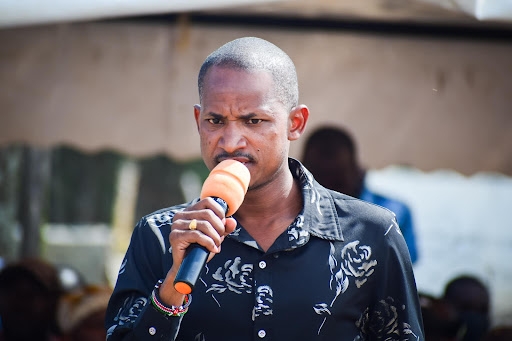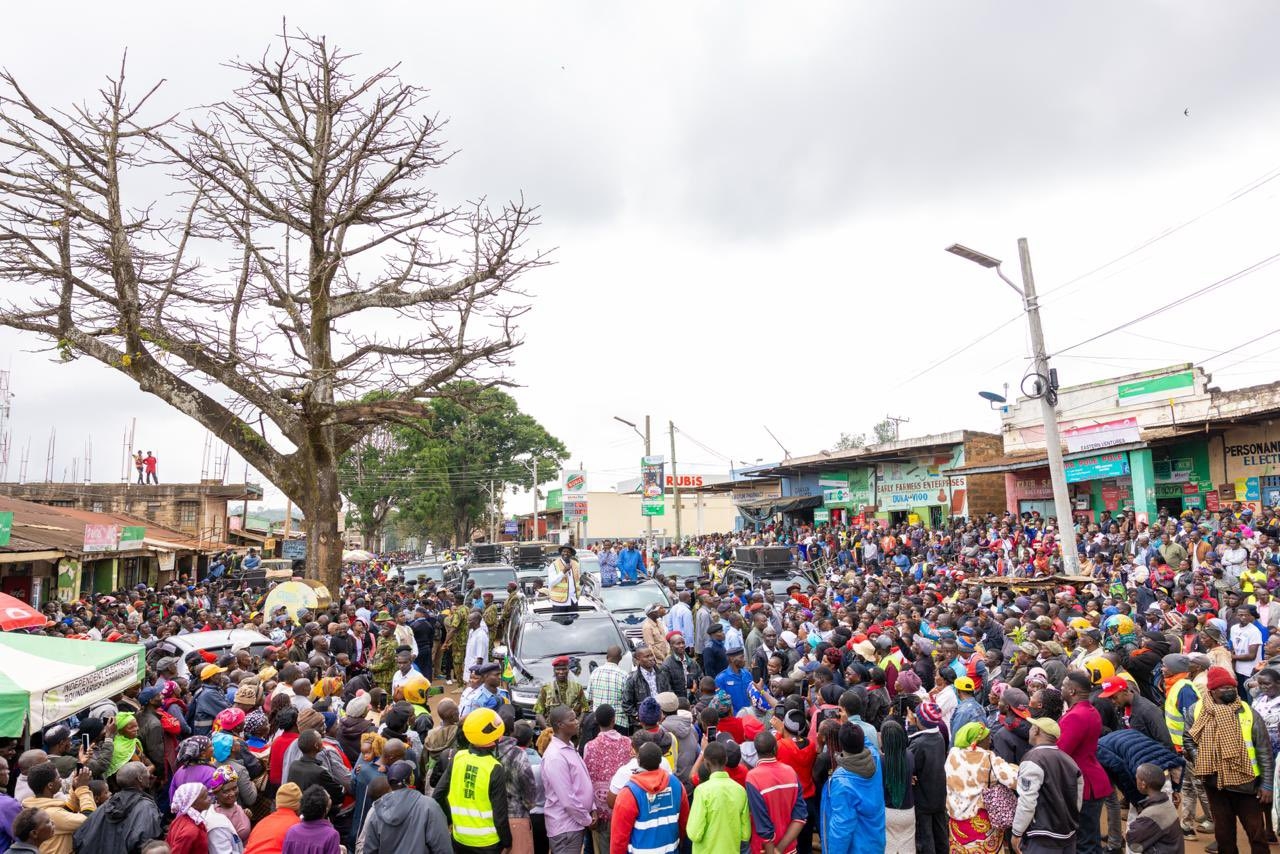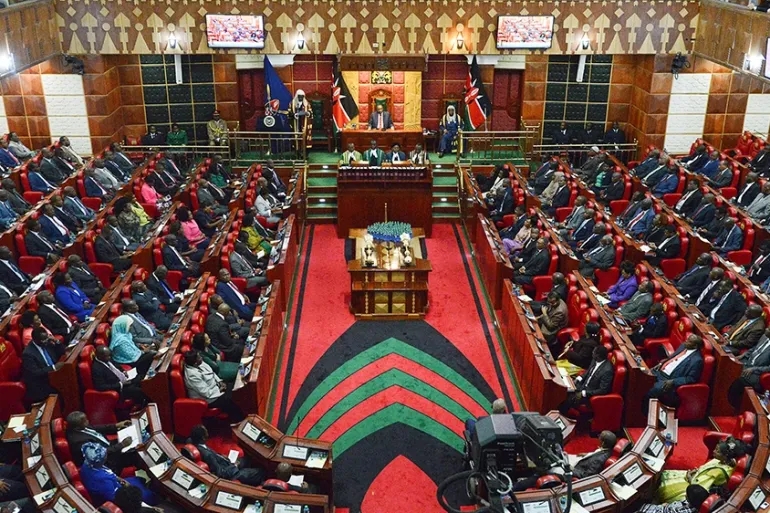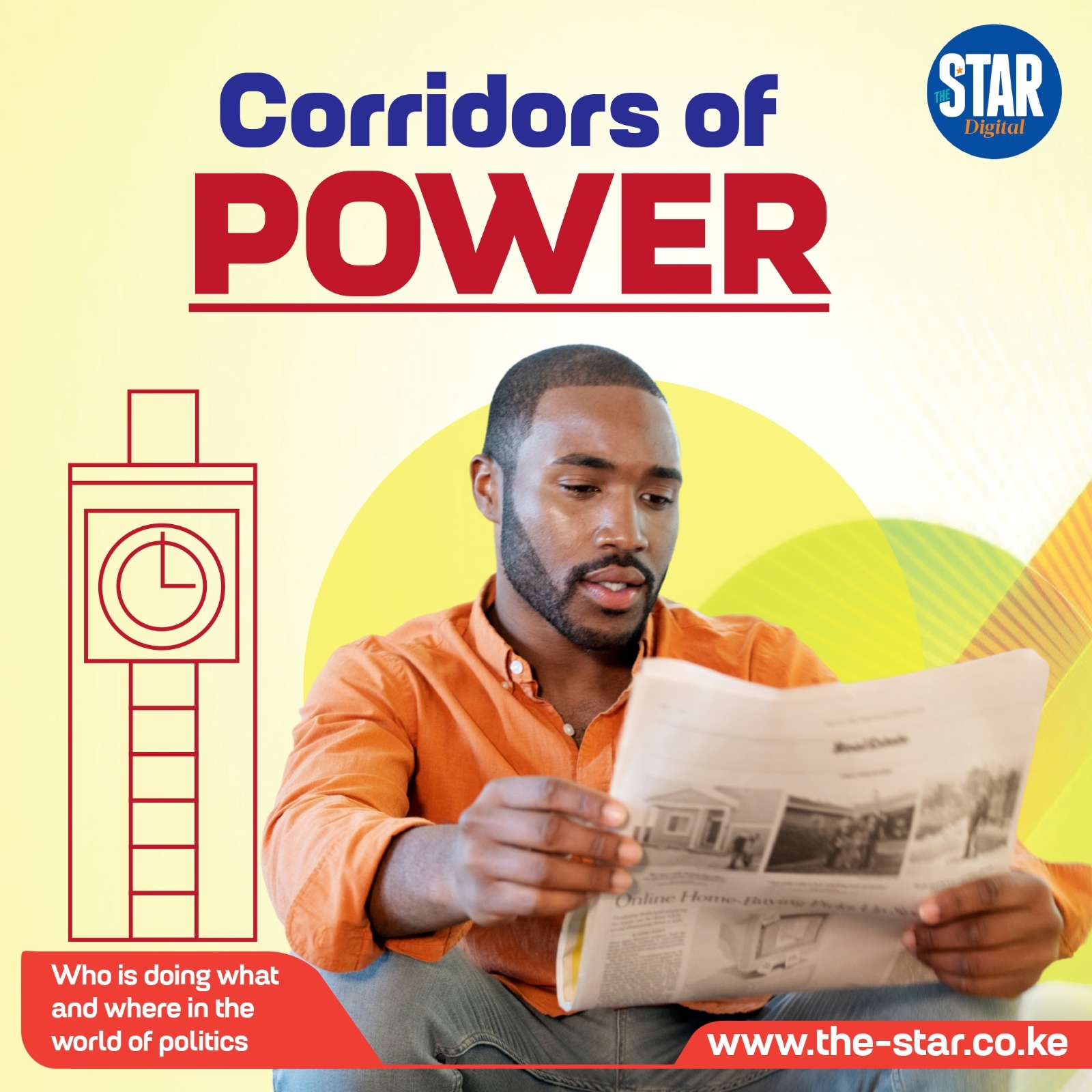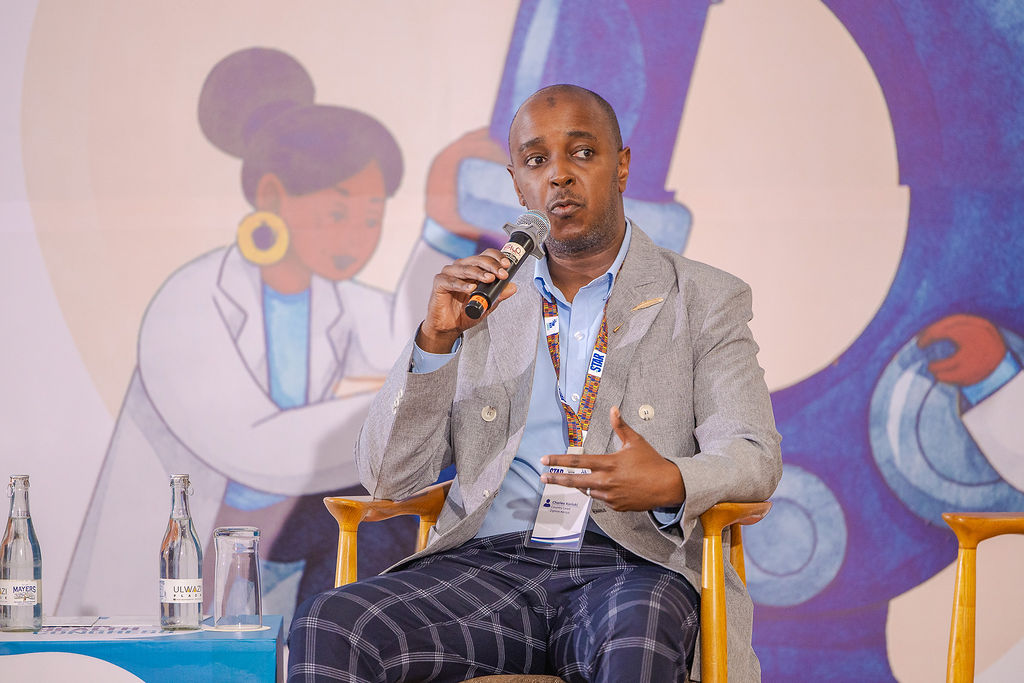 The Country Director for Zipline in Kenya, Charles Kariuki, during The Star Science Translation National Congress in Nairobi on October 22, 2025. Photo/ Courtesy.
The Country Director for Zipline in Kenya, Charles Kariuki, during The Star Science Translation National Congress in Nairobi on October 22, 2025. Photo/ Courtesy.Zipline Kenya Country Director CHARLES KARIUKI explains how
the company is using drone technology to transform access to medical and
essential supplies in four counties in the Lake region. He highlights how the future might look,
including expansion into animal health and eventual home delivery for foods and gadgets that you buy online, within minutes. He spoke with Star’s John
Muchangi.
QUESTION: Sometimes, a mother is bleeding to death in a hospital with no blood, and the nearest supply is two hours away. Zipline says it can solve that. How?
ANSWER: Absolutely. Emergency deliveries are a core part of our work, but not the only thing we do. For an emergency, blood is the best example. Obstetric emergencies, especially postpartum haemorrhage, require immediate transfusion. Traditional transport can take hours due to distance, terrain, or lack of ambulances. Zipline delivers within minutes.
We also deliver antivenoms, antimalarials, oxytocin, rabies
post-exposure prophylaxis, adrenaline, and other emergency medications. Health
workers often tell us our deliveries have saved lives they would otherwise have
lost.
Many of us only know the emergency delivery component of Zipline’s work. Can you tell us about your operations in Kenya?
Zipline is the largest autonomous logistics company in the world, ensuring that people everywhere can access the goods they need when and where they need them. We have been in Kenya for about three years. We began setting up in 2022 at Chemelil, Awasi, but operations did not kick off until a year later due to regulatory approvals.
We use drones to deliver a wide range of products, including sensitive medical commodities, which require extensive approvals from the Kenya Civil Aviation Authority (KCAA), the Ministry of Defence, the Kenya Air Force, and the Ministry of Interior. We also operate a world-class distribution centre in Kisumu with cold-chain infrastructure, all Pharmacy and Poisons Board-approved, and staffed by licenced pharmacists.
We distribute essential and non-essential medicines, blood (including components such as frozen plasma), and vaccines. Our core customers are health facilities, mostly public ones, since about 70–80 per cent of health facilities in Kenya are government-owned.
From our Kisumu distribution centre, which has a coverage radius of about 38,000 square kilometres, we can serve all 14 counties in the Lake Region Economic Bloc. Currently, we are serving Kisumu, Homa Bay, Kericho, and Nyamira counties.
Why only four counties so far?
Onboarding a county is a rigorous process. We start with the governors, then the CECMs for Health, chief officers, directors of health, and the County Health Management Team. After county approval, our GIS team maps facilities to determine which ones fall within drone range and safe airspace.
Zipline drones have a 100 km one-way range (200 km round trip). But we cannot fly through certain “keep-out zones,” including restricted airspace around airports or military installations. Kisumu International Airport, for example, takes up a large area that we must avoid.
Once safe routes are identified, we conduct community engagement so people understand the technology and don’t assume drones are surveillance tools. Facilities are then trained on ordering, receiving, and verifying deliveries.
How do health facilities place orders and receive deliveries?
Facilities order via a toll-free phone number or WhatsApp.
Each facility has a pre-confirmed drop zone. When the drone is five minutes
away, the staff receive automatic alerts. The drone slows, opens its hatch, and
drops the package using a biodegradable parachute.
Once a package arrives, staff verify delivery by scanning a QR code or using USSD. Zipline does not send deliveries unless orders have been double-checked by our fulfilment team. Fragile items like vaccines are specially packaged to maintain potency and avoid breakage.
What teams run your distribution centre?
We have two major teams: First is the fulfilment team that comprises pharmacists, clinicians, and trained staff who handle medical inventory, vaccines, and blood products.
Second is the flight operations and engineering staff who assemble and maintain drones, manage batteries, and oversee launches and returns.
We also handle animal health products. Rwanda uses Zipline for Artificial Insemination in pigs with great success, and Kenya has a huge livestock sector. With our cold-chain infrastructure, we can deliver vaccines and AI semen reliably and at the correct temperature.
Apart from fast delivery, of course, what other benefits do you bring to counties?
Zipline reduces both overstocking and understocking. Overstocking leads to expiry and financial losses. Understocking leads to patient frustration and loss of trust in facilities, especially for mothers seeking vaccines.
When a mother travels to a clinic and finds no vaccine, she may never return, contributing to zero-dose children. Zipline ensures facilities always have what they need, when they need it.
Reliable supply also strengthens the system upstream. When counties avoid stock-outs, they stop relying on private suppliers, some of whom have been linked to counterfeit products. This restores trust in public health facilities and the wider medical supply chain.
How many deliveries have you made in Kenya so far?
We have completed close to 25,000 flights in Kenya, delivering more than 400,000 vaccine doses, nearly 2,000 units of blood, and impacting more than one million lives.
We also support blood drives in schools and communities. Once collected, the blood is screened by the Regional Blood Transfusion Centre. They keep half, and the other half is delivered via Zipline to hospitals as needed.
 Zipline team assemble deliveries at the distribution centre in Kisumu City, Kenya.
Zipline team assemble deliveries at the distribution centre in Kisumu City, Kenya.Do you have Kenya-specific impact data yet?
Our monitoring and evaluation team is finalising Kenya’s impact report. But global studies show clear benefits. In Rwanda, blood wastage dropped by over 60 per cent, and maternal mortality decreased significantly in hospitals using Zipline. In Ghana, missed vaccinations dropped markedly. We expect similar outcomes for Kenya.
Tell me about the speed and capacity of your drones.
A Zipline drone carries up to three kilogrammes. It flies at speeds of about 120 kilometres per hour, reaching facilities in five to 45 minutes, depending on distance. A single distribution centre can complete 150 deliveries in 12 hours, or up to 300 if run for 24 hours.
In Rwanda, one centre does more than 400 deliveries per day. The scale is enormous when you consider the tonnage of medical products moved daily.
How many people does Zipline employ in Kenya?
We have more than 40 employees in Kenya, plus others supporting the African region. Each distribution centre needs at least 30 staff, scaling as deliveries increase.
Across Africa, Zipline employs 400 to 500 people, all locals. At our Kisumu hub, around 60 per cent are women, and most are under 30. We hire graduates straight from university, train them, and provide growth opportunities. Many have risen through the ranks or moved to senior roles elsewhere.
How do you work with regulators like KCAA?
We work very closely with all regulators. Kenya’s drone sector is young, and regulators must prioritise safety. Every route requires multi-agency approval involving KCAA,the Ministry of Defence, the Interior, the Kenya Wildlife Service, and the Kenya Air Force.
This ensures safe airspace but can slow expansion. We have proposed an “area approval” model, where regulators approve large blocks of airspace instead of individual routes. This would greatly accelerate access for underserved areas.
KCAA also performs periodic audits and annual licence renewals, and Zipline complies fully.
What about communities? Are people concerned about noise levels, or think the drones are doing secret surveillance?
Zipline drones are relatively quiet compared to traditional aircraft. During community engagement, most residents express curiosity rather than concern.
As long as people understand what the drones are delivering, especially blood, vaccines, and emergency drugs, the acceptance is overwhelmingly positive. Occasionally, people ask if drones are cameras or surveillance tools. We explain clearly that they do not have cameras and cannot record anything. Transparency is key.
Many Kenyans also associate drones with security risks.
We engage local leaders, chiefs, elders, and community health promoters before activating any route. We show people the drones, explain how they work, and allow them to touch and inspect the packages.
Zipline drones carry no cameras, weapons, or surveillance devices. They cannot hover; they follow a fixed flight path and glide across the sky silently.
All safety systems are automated. Drones rarely crash, and if they do, we have standard protocols, including immediate retrieval by trained staff and automatic reporting to regulators.
How do you handle weather disruptions?
Our drones can withstand rain, heat, and moderate winds. But extreme conditions may delay launches. We rely on real-time weather monitoring and have radio operators on site. Each drone performs nearly 600 automated safety checks before takeoff.
If a drone aborts a flight due to weather, we immediately dispatch another to minimise delays.
What expansion plans do you have in Kenya?
We will announce details soon. Several counties across central, southern, and northern Kenya have requested our services. Our goal is to expand significantly so that more Kenyans benefit from reliable deliveries of medical and essential supplies.
I understand you also do discreet HIV deliveries. How does that work?
Adolescents and young adults living with HIV often face stigma, and many do not consistently visit facilities for refills. Zipline’s discreet delivery model allows clinics to receive ARVs and related commodities quickly and confidentially.
We don’t deliver directly to individuals; we deliver to health facilities or outreach points. But the speed, reliability, and privacy around stock availability make a big difference.
Under the Elton John AIDS Foundation project, we supported HIV testing, screening, and delivery of prevention tools. We worked with community health promoters who engaged young people in schools, markets, and other youth spaces. Once someone tested positive, we helped ensure the clinic always had their medication in stock.
We interacted with more than 100,000 adolescents and young adults during that period.
But do you envision home deliveries in Kenya anytime soon?
Yes, that is the long-term vision. Globally, Zipline’s Platform 2 delivers to homes and businesses using a small, quiet droid that lowers to a doorstep. This is active in the US and Nigeria. Kenya will eventually adopt it as regulations evolve.
The demand will be enormous in e-commerce, food delivery, pharmaceuticals and emergency supplies. For now, our priority is strengthening the medical supply chain.
How do you charge counties for services? What is the business model?
Counties purchase delivery credits in bulk. For example, a county can buy a package of 3,000 deliveries, valid for a fixed period. Facilities then make unlimited orders within the available credits.
This model gives counties predictable costs and flexibility. It also ensures that facilities are not charged per item, only per delivery. We do not mark up drug prices. All commodities come from the counties’ own suppliers (KEMSA or others). We simply deliver.



